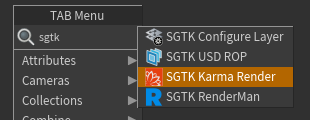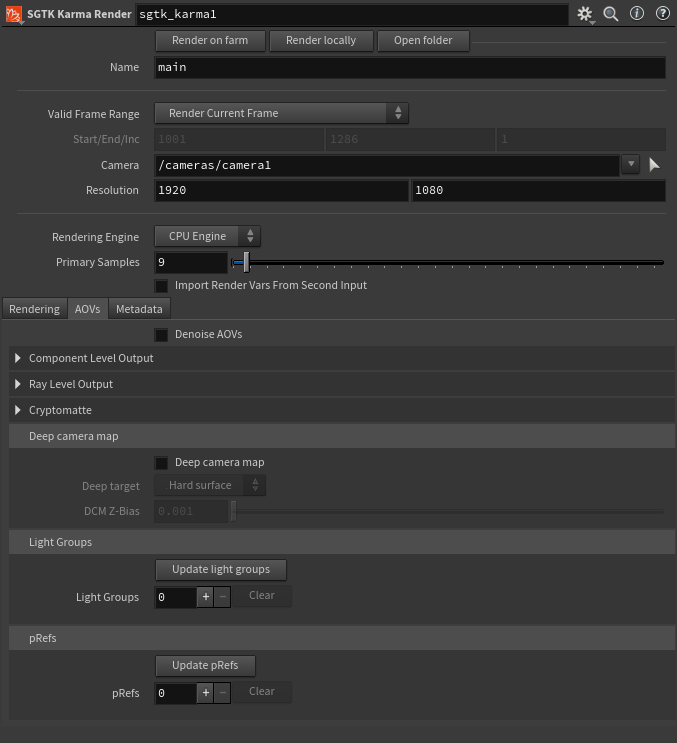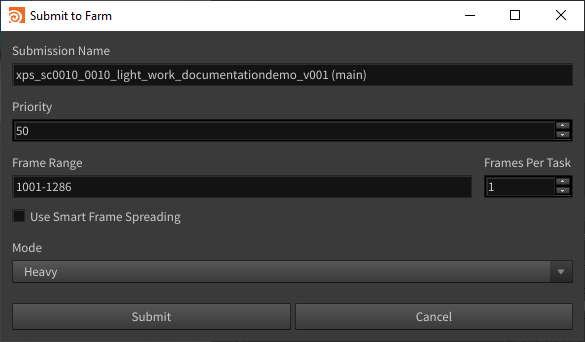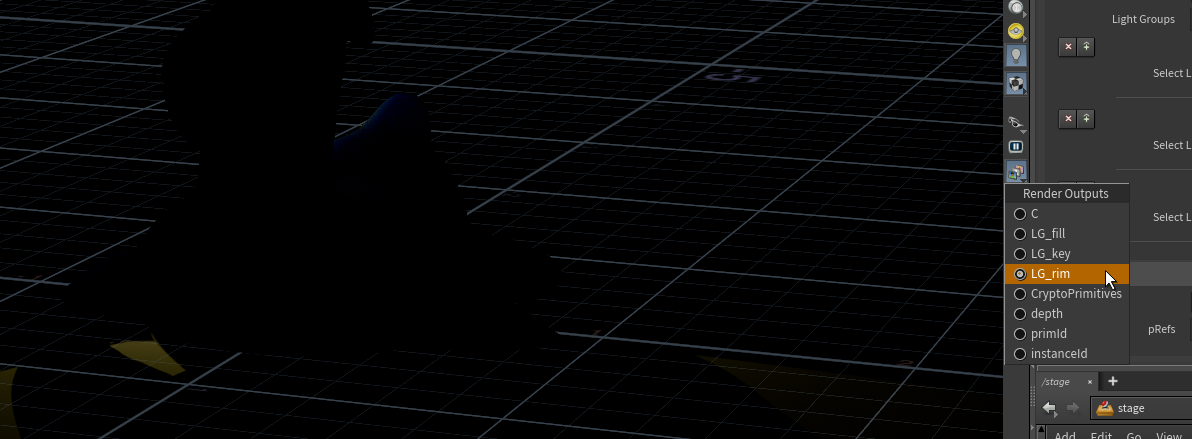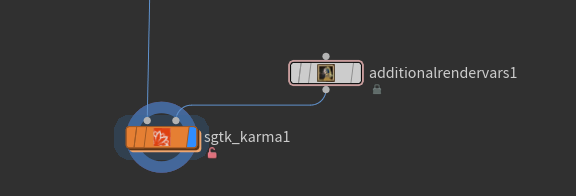Houdini - ShotGrid - Rendering with Karma
We used to have Arnold and RenderMan integrations as well, but they haven't been updated and are thus currently not usable. A student will have to put in some work to get these integrations up and running again.
We mostly render using Karma in our ShotGrid pipeline. It's fast, reliable, and SideFX actually responds to our emails if we need help! To get started, add a SGTK Karma Render node at the bottom of your node tree.
We used to have Arnold and RenderMan integrations as well, but they haven't been updated and are thus currently not usable. A student will have to put in some work to get these integrations up and running again.
Starting your first render
If you click on the sgtk_karma node you'll see this interface:
It's similar to the Karma Render Settings node, except it's a bit easier to use and comes with some additional features. Added features include easy farm submissions tools, automatic file paths, easy light groups configuration and easy deep configuration. To get started, simply select the right camera and press "render on farm". A new pop up appears:
The default value is fine for pretty much all of these. If your render is very lightweight you might want to change the mode to medium or light. You can enable the Use Smart Frame Spreading option if your render is sure to take a long time, as this ensures the first, last and middle frames are rendered first so you can quickly see if there are any problems in your render.
Cryptomattes are enabled by default and will be rendered to separate EXR files, this is because Nuke seems to have some problems reading multi-layer EXRs with a Karma rendered Cryptomattes in them.
Most options such as sample settings, AOVs, etc remain unchanged. There are a couple of extra options you should know about though:
Denoising
There's a tiny checkbox in the AOVs panel that says Denoise AOVs:
If you enable this, a special post-job script runs on the farm whenever a frame finishes rendering. This script denoises the frame and places it in a separate folder, which shows up just like your other renders in the publish menu. Your original frames are never modified.
The Denoise AOVs checkbox only applies to farm renders. It will not work on local renders.
Light groups
Light groups allow you to render specific lights separately so you can later manipulate them in comp. You can add a light group by clicking the + in the light group tabs. Fill in the name of your light group and press the icon in the Select Light LOPs section.
Press Update light groups when you're done settings things up. This will cause the AOVs to be added to your render, double check they are working in the viewport by selecting them as Render Outputs.
In Nuke you can now add the LightGroupMixer node to grade your light groups.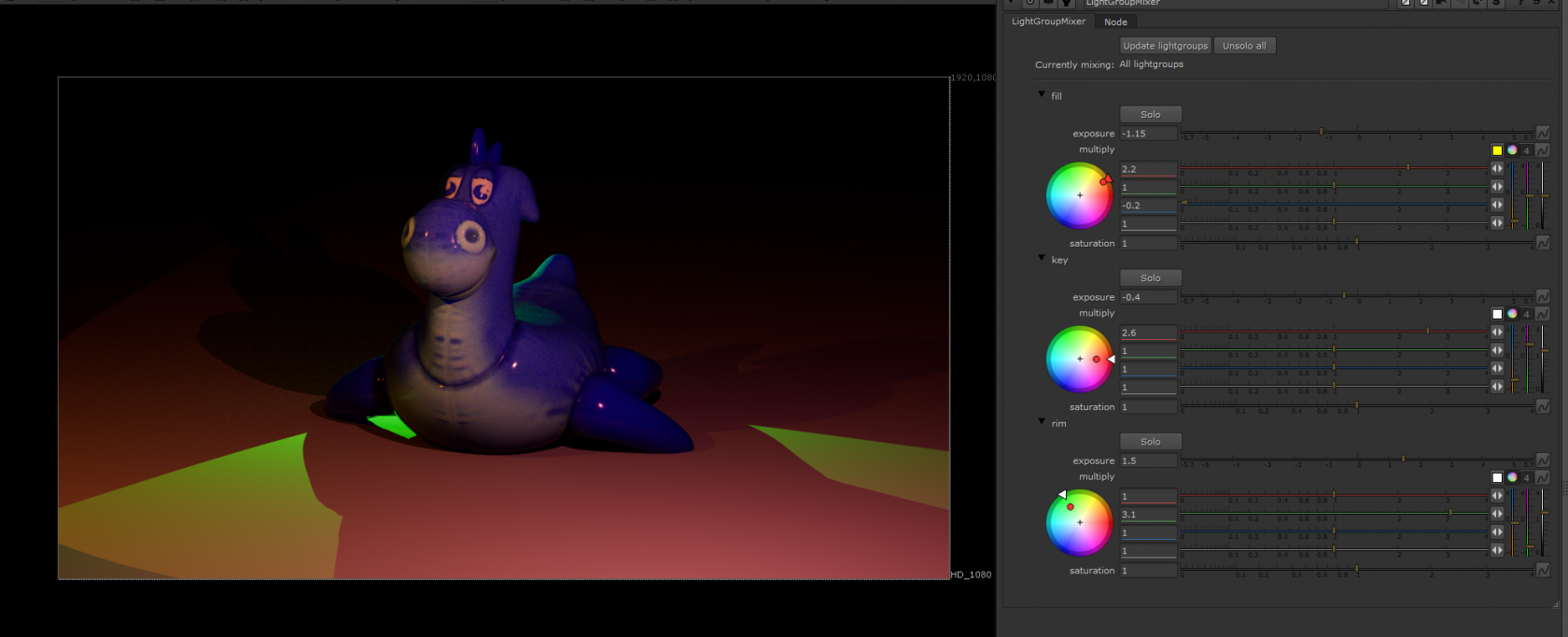
Adding custom AOVs
Sometimes you'll need to add some custom AOVs to your render. Normally you might do this in the Karma Render Settings node in the Extra Render Vars section, but this section is not available in the SGTK Karma node. So instead you should create an Additional Render Variables node and plug it into the second input of the SGTK Karma node. Then enable the Import Render Vars From Second Input option in the SGTK Karma node.
Arnold integration developed by Bo Kamphues, original RenderMan integration by Gilles Vink and later rewritten by Max de Groot, Karma integration developed by Mervin van Brakel.

